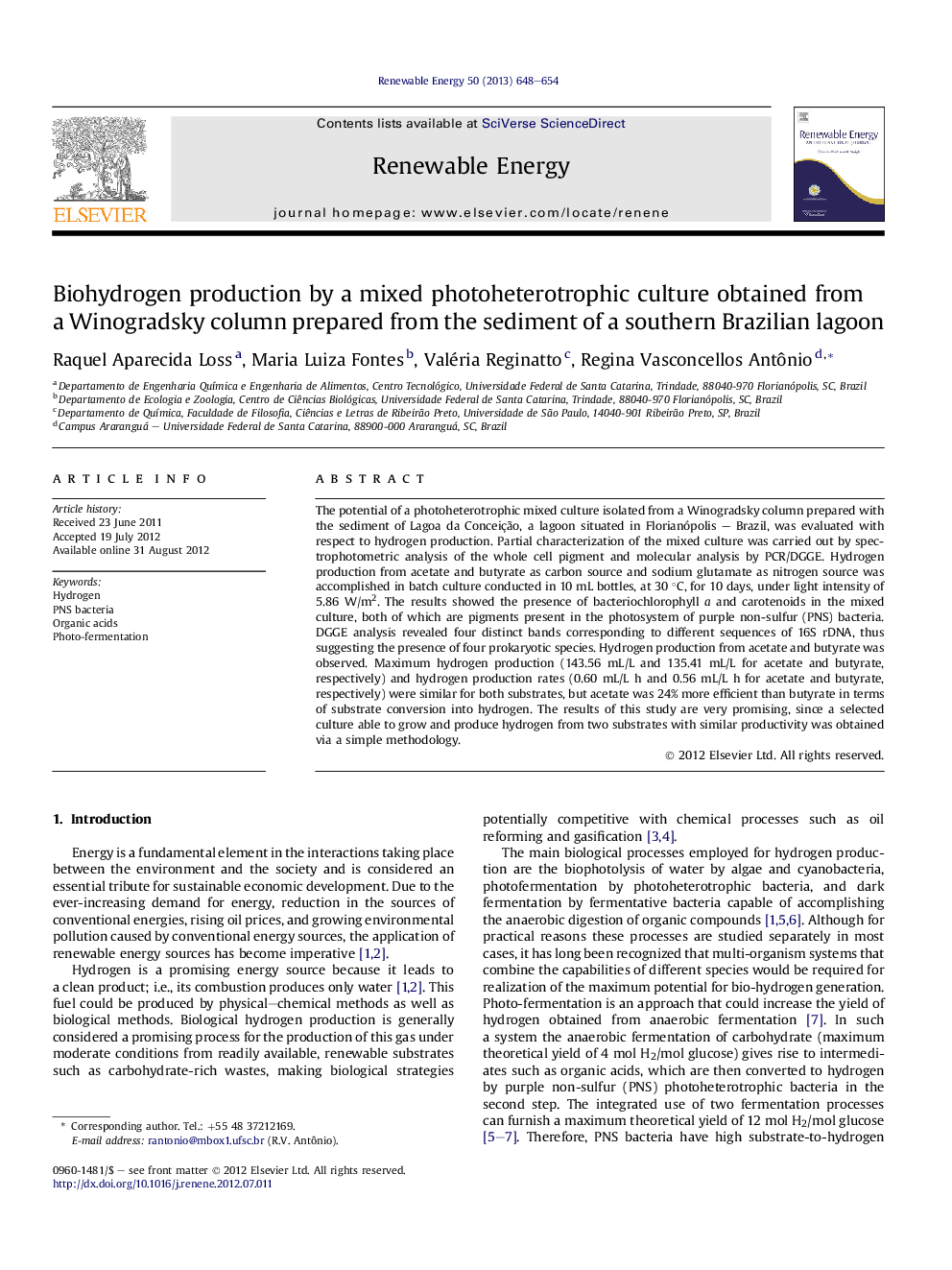| Article ID | Journal | Published Year | Pages | File Type |
|---|---|---|---|---|
| 300422 | Renewable Energy | 2013 | 7 Pages |
The potential of a photoheterotrophic mixed culture isolated from a Winogradsky column prepared with the sediment of Lagoa da Conceição, a lagoon situated in Florianópolis – Brazil, was evaluated with respect to hydrogen production. Partial characterization of the mixed culture was carried out by spectrophotometric analysis of the whole cell pigment and molecular analysis by PCR/DGGE. Hydrogen production from acetate and butyrate as carbon source and sodium glutamate as nitrogen source was accomplished in batch culture conducted in 10 mL bottles, at 30 °C, for 10 days, under light intensity of 5.86 W/m2. The results showed the presence of bacteriochlorophyll a and carotenoids in the mixed culture, both of which are pigments present in the photosystem of purple non-sulfur (PNS) bacteria. DGGE analysis revealed four distinct bands corresponding to different sequences of 16S rDNA, thus suggesting the presence of four prokaryotic species. Hydrogen production from acetate and butyrate was observed. Maximum hydrogen production (143.56 mL/L and 135.41 mL/L for acetate and butyrate, respectively) and hydrogen production rates (0.60 mL/L h and 0.56 mL/L h for acetate and butyrate, respectively) were similar for both substrates, but acetate was 24% more efficient than butyrate in terms of substrate conversion into hydrogen. The results of this study are very promising, since a selected culture able to grow and produce hydrogen from two substrates with similar productivity was obtained via a simple methodology.
► Hydrogen production by a new mixed culture selected from a Winogradsky column. ► PNS bacterial consortium capable of biohydrogen production from organic acids. ► Production of energy by photoheterotrophic metabolism from renewable resources.
